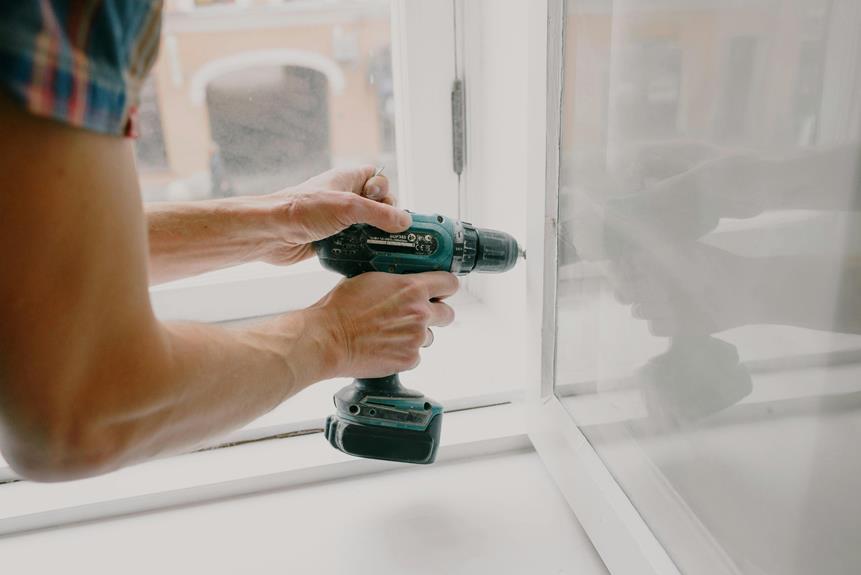As households strive to become more environmentally conscious and financially prudent, the topic of budgeting for home energy bills has gained increasing relevance. From heating and cooling to lighting and appliances, the various components of home energy consumption require careful consideration and planning.
By creating a budget for energy expenses, individuals can not only reduce their ecological footprint but also save money in the long run. From understanding your energy usage patterns to considering renewable energy options, these tips will make you wonder how you ever managed without them.
Setting a Monthly Energy Budget
Managing your home energy expenses becomes easier when you set a monthly energy budget. Creating a budget gives you better control over your energy usage and helps you avoid surprises when the bill arrives. To start, look at your previous energy bills to find an average monthly cost. This will be your starting point for your budget.
Consider setting a realistic goal to reduce your energy usage by a certain percentage each month. This will motivate you to find ways to save energy and lower your bills.
Now that you have your monthly energy budget in place, it’s time to implement some energy-saving tips. Begin by adjusting your thermostat to save energy when you’re not at home or during the night. Using a programmable thermostat can make this process even easier.
Remember to turn off lights and unplug electronic devices when they’re not in use to save energy. Upgrading to energy-efficient appliances and using LED light bulbs can also help reduce your energy consumption.
Don’t forget to regularly maintain your appliances and make energy-efficient upgrades to your home, such as insulating windows and doors.
Evaluating Energy Consumption Patterns
To evaluate your energy consumption patterns, analyze your energy usage over a specific period. This will help you identify areas where you can make changes to save energy and reduce your bills. Here are some tips to help you evaluate your energy consumption:
- Keep track of your energy usage: Use an energy monitoring device or check your utility bills to track your energy consumption. This will give you a clear picture of how much energy you’re using and when.
- Identify energy-saving habits: Look for patterns in your energy usage. Are there certain times of the day when your energy consumption is higher? Are there appliances or devices that are using more energy than necessary? By identifying these habits, you can make changes to save energy.
- Analyze your energy-saving efforts: Evaluate the effectiveness of your energy-saving measures. Have you seen a decrease in your energy consumption after implementing certain changes? If not, you may need to adjust your habits or try different strategies.
- Set goals for improvement: Use the information you gather to set goals for reducing your energy consumption. Whether it’s reducing your usage by a certain percentage or reaching a specific energy-saving target, setting goals can help motivate you to make positive changes.
Identifying Energy-Wasting Appliances
To identify which appliances are wasting the most energy, you can examine your energy consumption patterns and conduct an energy audit. This process involves assessing your energy usage and finding areas for improvement. Here is a table that highlights some common energy-wasting appliances and suggests energy-saving alternatives:
| Energy-Wasting Appliance | Energy-Saving Alternative |
|---|---|
| Incandescent light bulbs | LED light bulbs |
| Old, inefficient refrigerator | Energy Star certified refrigerator |
| Desktop computer | Laptop or tablet |
| Traditional water heater | Tankless water heater |
| Inefficient HVAC system | Energy-efficient HVAC system |
Implementing Energy-Efficient Lighting
Consider switching to energy-efficient lighting options for a more cost-effective and environmentally friendly home. By using energy-efficient bulbs and upgrading your lighting, you can have a significant impact on your energy consumption and reduce your monthly bills.
Here’s why making the switch is important:
- Energy-efficient bulbs: Energy-efficient bulbs like LED or CFL bulbs use less energy than traditional incandescent bulbs. They can last up to 25 times longer, reducing the need for frequent replacements.
- Lower energy consumption: Energy-efficient lighting consumes less electricity, resulting in lower energy bills and substantial savings over time.
- Environmental benefits: Using energy-efficient lighting helps reduce your carbon footprint. These bulbs produce fewer greenhouse gas emissions, contributing to a healthier environment.
- Enhanced lighting quality: Energy-efficient bulbs provide bright, high-quality light that improves the ambiance and comfort of your home. They also offer various color temperatures, allowing you to create the desired atmosphere in each room.
Switching to energy-efficient lighting is a simple yet effective way to save money, conserve energy, and contribute to a greener planet. Start by replacing your most frequently used bulbs with energy-efficient options and gradually upgrade the rest of your lighting fixtures.
Insulating Your Home for Better Efficiency
Improve your home’s energy efficiency by properly insulating it. Insulation is a highly effective way to reduce heat loss and make your living space more comfortable and cozy. Here are some key areas in your home that you should insulate:
Attic: Insulating your attic prevents heat from escaping through the roof, as heat rises. You can install insulation batts or rolls on the attic floor or insulate the roof itself.
Walls: Insulating your walls helps reduce heat loss through conduction. Consider injecting insulation into the walls or adding insulation boards to the interior or exterior walls.
Windows and Doors: Insulating windows and doors prevent drafts and heat loss. Use weatherstripping or apply window film to improve insulation. By properly insulating these areas, you can save money on your energy bills and create a more energy-efficient home.
Weatherizing Doors and Windows
To make your doors and windows more energy-efficient and comfortable, it’s important to weatherize them. This involves sealing any gaps or cracks around them to prevent drafts and heat loss. Here are some tips to help you weatherize effectively:
- Fill in any gaps or cracks around your windows and doors using caulk. This will seal out drafts and prevent heat from escaping.
- Install weatherstripping along the edges of your doors to create a tight seal. This will prevent cold air from entering and warm air from escaping.
- Add an extra layer of insulation to your windows by using window film or insulating curtains. This will help keep the cold air out and the warm air in.
- Consider using draft stoppers or door sweeps to seal the gap at the bottom of your doors. This will prevent drafts from entering your home.
Installing a Programmable Thermostat
Installing a programmable thermostat can significantly improve your home’s energy efficiency and help you save on heating and cooling costs. With a programmable thermostat, you have better control over your home’s temperature, ensuring comfort when needed and conserving energy when not in use.
One of the main benefits of using a programmable thermostat is the ability to create temperature schedules that align with your daily routine. You can program the thermostat to lower the temperature when you’re away at work or asleep, and raise it when you’re back home or waking up.
This eliminates the need to manually adjust the temperature every time and allows you to enjoy energy savings without sacrificing comfort.
To maximize energy savings with a programmable thermostat, here are a few tips to keep in mind. Set your thermostat to the highest temperature in the summer that still keeps you comfortable, and the lowest temperature in the winter that you can tolerate. This simple adjustment can significantly reduce energy consumption.
Avoid frequently changing the temperature throughout the day as it can waste energy. Finally, remember to regularly change the batteries in your thermostat to ensure it function properly.
Using Power Strips to Reduce Vampire Energy
To reduce wasted electricity and vampire energy, consider using power strips in your home. Power strips aren’t only convenient for organizing your electronic devices, but they also offer several benefits that can help you save energy and money.
Here’s why power strips are a must-have in your energy-saving arsenal:
- Convenience: Power strips make it easy to turn off multiple devices with just one switch, preventing them from consuming standby power when not in use.
- Vampire energy prevention: Power strips completely cut off the power supply to your devices, eliminating vampire energy. Vampire energy refers to the energy consumed by appliances and electronics even when they’re turned off or in standby mode.
- Energy savings: Using power strips can significantly reduce your energy consumption, resulting in lower electricity bills.
- Protection against power surges: Power strips with surge protectors safeguard your electronic devices from power surges, ensuring their longevity and preventing potential damage.
Investing in power strips is an affordable and practical way to reduce your energy usage and contribute to a greener environment. By incorporating these energy-saving gadgets into your daily routine, you can make a positive impact while enjoying the benefits of lower utility bills.
Taking Advantage of Off-Peak Energy Rates
Save money on your energy bills by taking advantage of off-peak energy rates. Off-peak energy rates are lower prices charged for electricity during specific periods when the electricity demand is lower.
By using electricity during these off-peak hours, you can enjoy significant savings on your energy bills. Time of use rates determine the cost of electricity based on the time of day, allowing you to plan your energy usage strategically.
To take advantage of off-peak energy savings, it’s important to understand your utility provider’s time of use rates. Typically, off-peak hours are during nights, weekends, and holidays when most people aren’t using electricity. By shifting your energy-intensive activities such as washing clothes or running the dishwasher to these off-peak hours, you can reduce your energy costs.
Consider investing in smart home technology that allows you to automate your energy usage based on off-peak hours. For example, smart thermostats can adjust your home’s temperature during off-peak hours, maximizing energy efficiency and minimizing costs.
Exploring Renewable Energy Options
If you want to reduce your energy costs and contribute to a more sustainable future, exploring renewable energy options is a great idea. Here are some ways you can get started:
- Install solar panels: Solar energy is a clean and abundant source of power. By harnessing the sun’s rays, you can generate electricity for your home and even sell excess energy back to the grid. Installing solar panels is now more affordable thanks to government incentives like tax credits and rebates.
- Consider wind power: If you live in a windy area, installing a small wind turbine can help you reduce your reliance on conventional electricity and lower your energy bills. Wind power is another renewable energy source worth exploring.
- Invest in geothermal energy: Geothermal energy uses the Earth’s heat to generate power. By tapping into this natural resource, you can heat and cool your home more efficiently, saving money on heating and cooling costs.
- Explore hydropower options: If you have a stream or river on your property, you may be able to generate electricity using a micro-hydro system. This clean and reliable renewable energy source can provide you with a constant source of power.
Conducting Regular HVAC Maintenance
Regular HVAC maintenance is important for ensuring the efficiency and longevity of your home’s heating and cooling system. By following some simple HVAC maintenance tips, you can save energy and reduce your overall energy costs.
One of the most important HVAC maintenance tips is to regularly clean or replace your system’s air filters. Dirty filters can restrict airflow, making your HVAC system work harder and use more energy. By cleaning or replacing the filters every one to three months, you can improve your system’s efficiency and save on energy costs.
Another energy-saving tip is to keep your outdoor unit clear of debris and vegetation. Leaves, grass, and other debris can block airflow and cause your HVAC system to work less efficiently. Regularly check and clean the area around your outdoor unit to ensure proper airflow and optimal performance.
Scheduling regular professional HVAC maintenance can also help identify and address any potential issues before they become major problems. A qualified technician can inspect and clean your system, ensuring that it operates efficiently and prolongs its lifespan.
Taking these steps can help you maintain a comfortable and energy-efficient home.
Utilizing Natural Ventilation Techniques
Maximizing energy efficiency and promoting fresh airflow can be achieved by incorporating natural ventilation techniques into your home. Natural ventilation offers numerous benefits, including reducing energy consumption and creating a healthier and more comfortable living environment.
Here are some techniques you can use:
- Cross-ventilation: Open windows on opposite sides of your home to allow a natural breeze to flow through. This improves air circulation and cools your space.
- Strategic window positioning: Place windows strategically to take advantage of prevailing winds and optimize natural ventilation.
- Ventilation grilles: Install grilles or vents in your home to facilitate the movement of air and promote cross-ventilation.
- Stack effect: Utilize the natural tendency of warm air to rise and cool air to sink by creating openings at high and low levels in your home. This allows for natural convection.
Implementing these natural ventilation techniques can be particularly beneficial in urban areas where buildings are closely spaced, and access to fresh air might be limited. By harnessing the power of nature, you can reduce your reliance on mechanical cooling systems, save on energy costs, and enjoy the benefits of fresh and healthy airflow in your home.
Monitoring Energy Usage With Smart Meters
Keep track of your energy usage with the help of smart meters. Smart meters offer many benefits and are easy to install in your home. These devices provide real-time information about your energy usage, allowing you to make informed decisions and take control of your energy bills.
One of the main benefits of smart meters is that they provide accurate and detailed data about your energy consumption. Unlike traditional meters, smart meters can measure your usage in real time, giving you a clear understanding of how much energy you’re using at any given moment.
This information can help you identify opportunities to save energy and make adjustments to your habits accordingly.
Smart meters also eliminate the need for manual meter readings. With traditional meters, you’d have to rely on meter readers to come to your home and record your energy usage. This process wasn’t only inconvenient but also prone to errors.
With smart meters, the data is automatically transmitted to your energy provider, ensuring accurate billing and eliminating the hassle of scheduling meter readings.
Installing a smart meter is a straightforward process. Your energy provider will arrange for a technician to come to your home and replace your old meter with a smart meter. The installation usually takes a couple of hours and involves minimal disruption to your daily routine.
Conclusion
By implementing these budgeting hacks for your home energy bills, you can save money and contribute to a more sustainable future.
Take control of your energy consumption, identify wasteful appliances, and explore renewable energy options. Every small step towards efficiency is a step towards a brighter and greener tomorrow.
Embrace these changes and let your home be a model of responsible energy usage.











